The evolution of device activations
The problem
Our phone activation and setup process can be confusing, lengthy, and frustrating, driving customers to seek agent help.
Our team set out to design a phone activation and data transfer experience that builds customer confidence and successfully guides them without needing agent assistance.
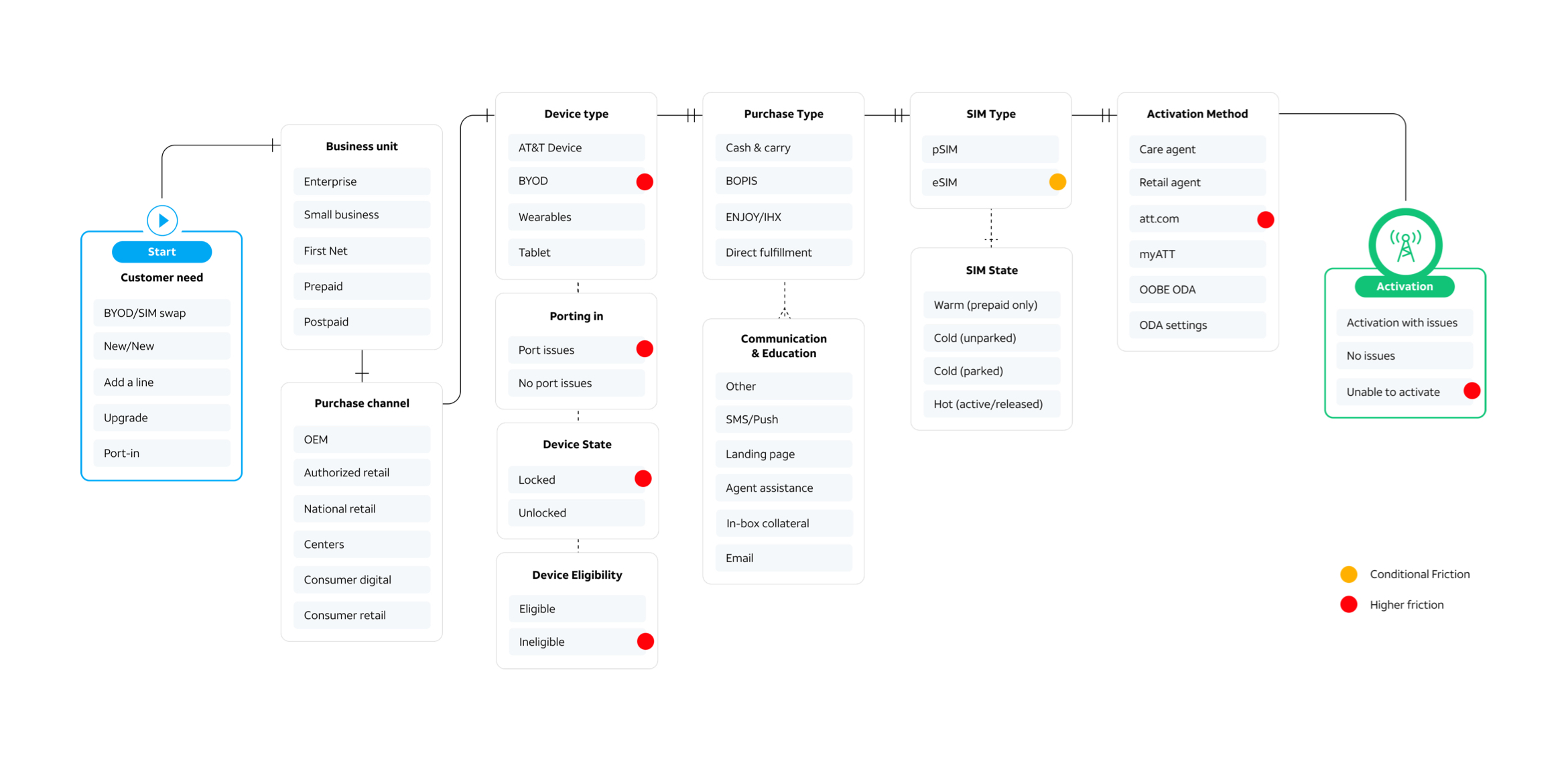
Objectives and key results
- Reduce time and effort to activate and transfer data via contextual and automated user flows
- Build cohesion across touchpoints in the activate and transfer user journey
- Simplify instructions to activate and transfer to be intuitive for all users
- Increase call shed relating to phone activation & data transfer
- Increase NPS for activations and transfer
- Position AT&T for a successful evolution in activation
While only about 1% of our customers use eSIM today, the use of eSIM for new phone activation is expected to grow substantially in the next few years.
We want to position AT&T for success in the evolution of activation. We’re looking at our current activation process and testing new experiences for eSIM activation.
For manufacturers:- Improve supply chain
- Sustainability
What we did

Discovery research
Benchmarking competitive & in-flight work to inform the ideal state

12 user testing sessions
Validating the activation & setup ideal state designs with our customers

Technical analysis
Assessing the environment of today to prepare for the needs of tomorrow
Research shows that eSIM as a concept is perceived fairly positively
The early customer feedback we got from our past and ongoing research continues to support the perceived convenience of eSIM. Customers like the idea of "instant download" for their SIM and not having to make a trip to the store or wait for a SIM card to arrive in the mail.
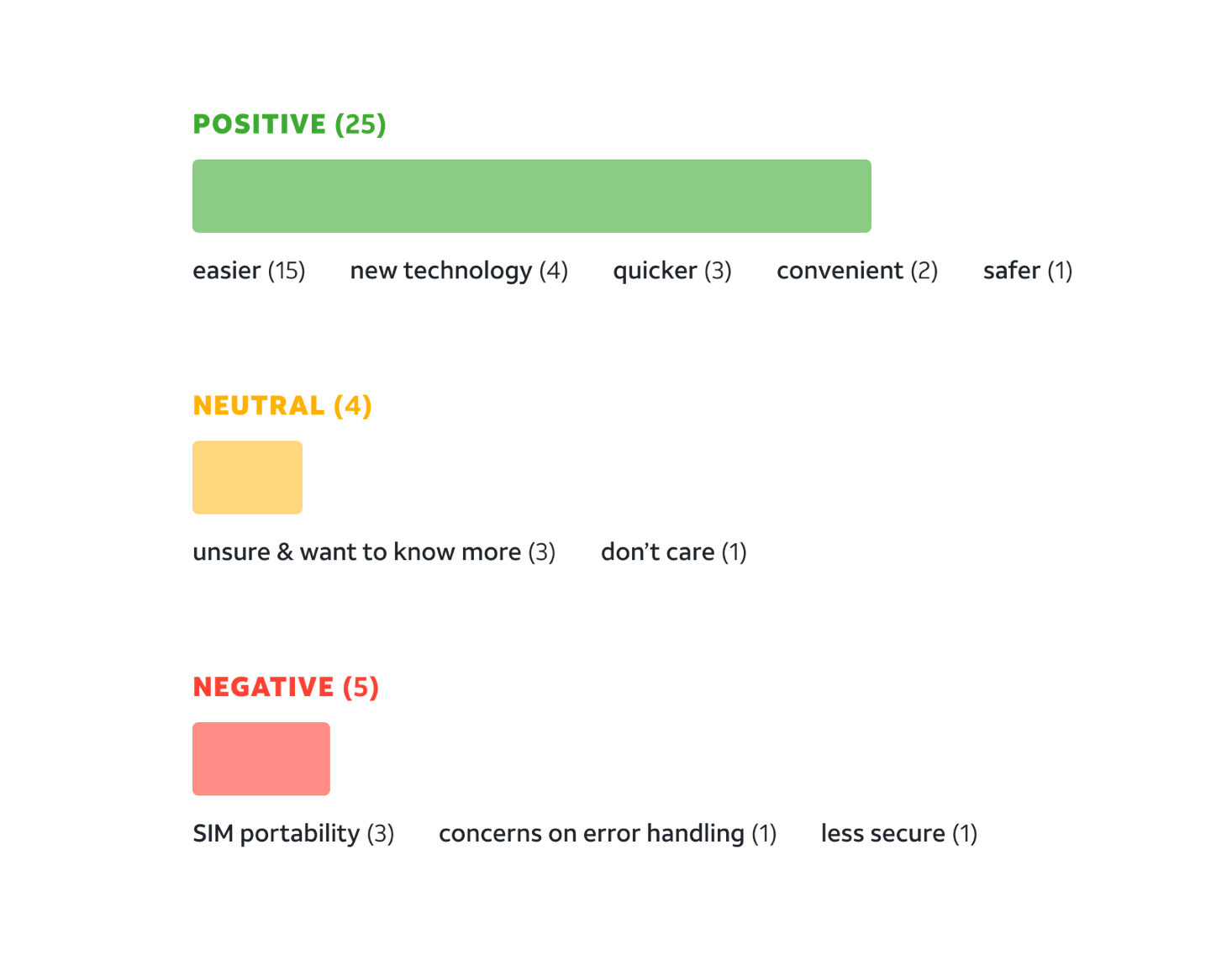
Customers need contextual information about eSIM
As activation processes change for eSIM, we've discovered that customers are able to make an educated guess about its function even if they haven't used eSIM before. When the word eSIM is used, it's important to use it contextually at moments when they need to know to provide education and explanation consistently throughout the journey. Otherwise, the term eSIM can be seen as technical jargon.
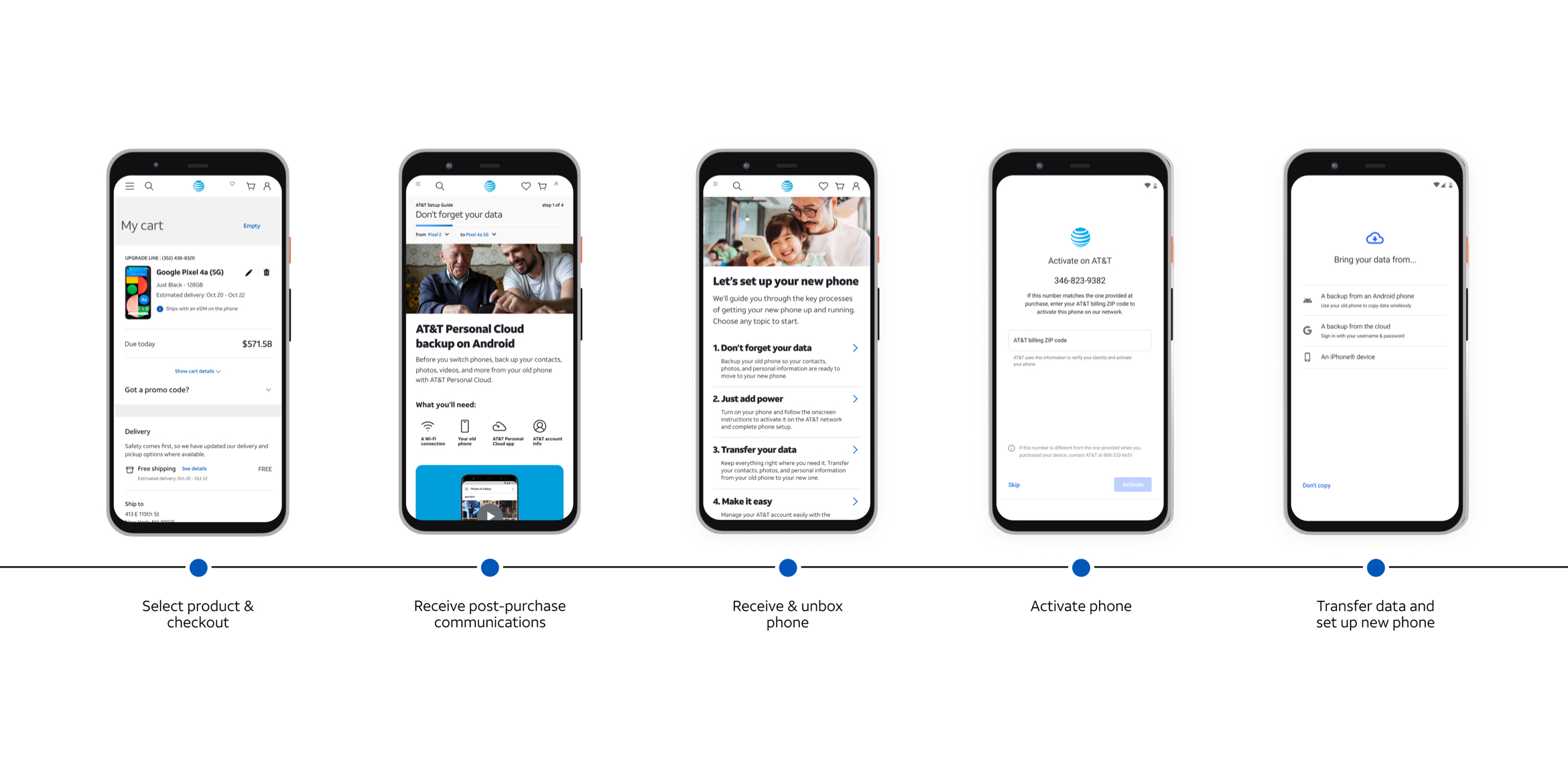
Data backup reminders smooth the setup experience
Our research uncovered that preparing and instructing customers for data backup was an important step during the activation process. If customers had not back up their data, activation could take hours and cause anxiety that they may have lost their data, including sentimental photos. Prior to activation with eSIM, we wanted to prepare customers to backup and transfer their data through the mechanism of their preference whether that was a cloud transfer or a direct transfer. We took the opportunity to give customers multiple data backup and transfer reminders across journey touchpoints such as at the order confirmation screen, email, push notification, in-box collateral and a digital setup guide.

Guided instructions provide customers with confidence
All of our user testing participants expressed they would like to see instructions on how to back up and activate their phone. When proving this information we found the following guidelines to be the most beneficial:
- Utilize a range of media in instructive content
- Include activation and setup information in the box
- Provide links and connections to relevant help information
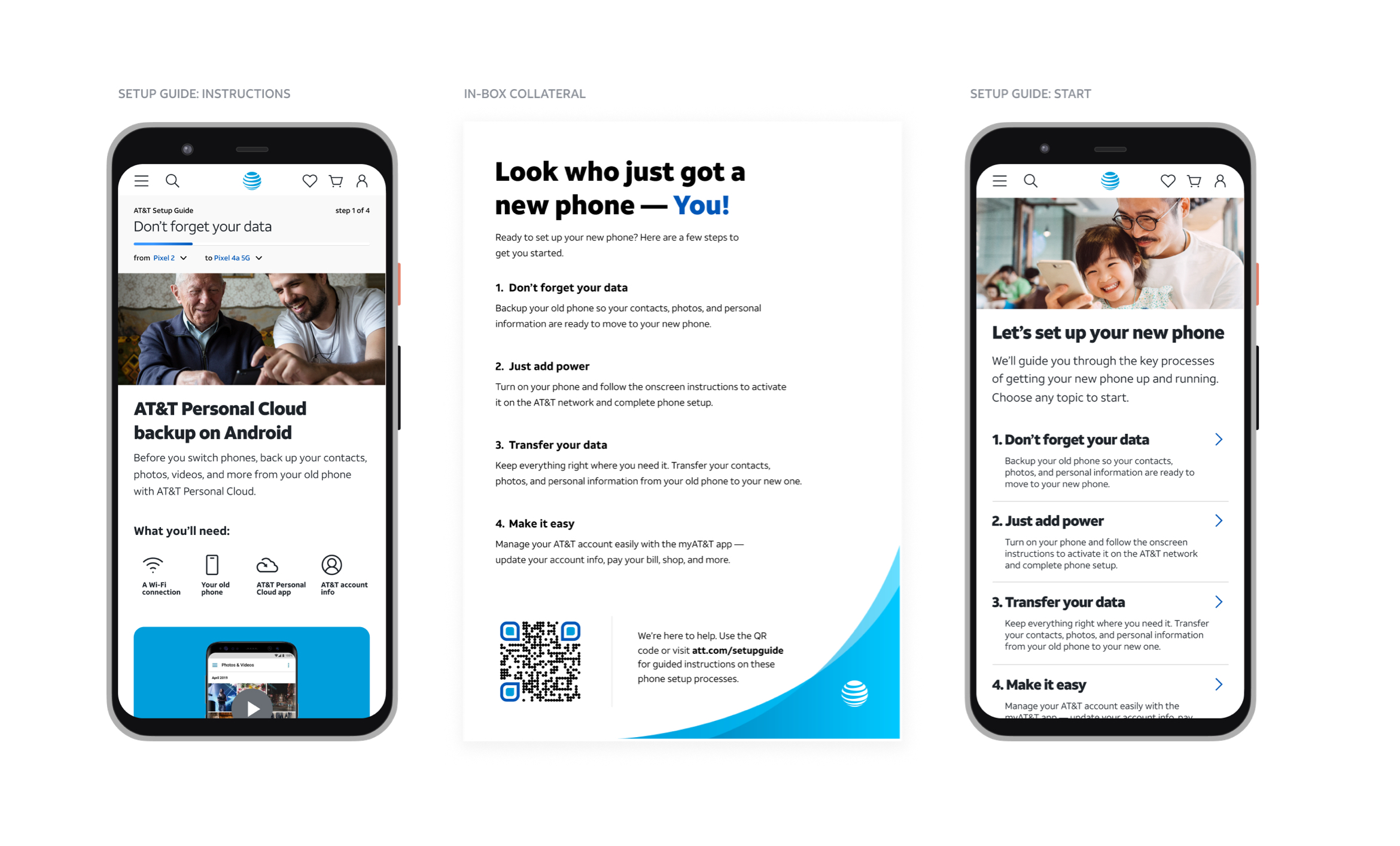
Smart setup guide
Our user testing participants expected to see digital, step-by-step, detailed instructions for activation and setup. They also expected an option to easily contact support if any issues arise. It is important to be inclusive of various customer learning styles such as video, visuals, and written instructions.
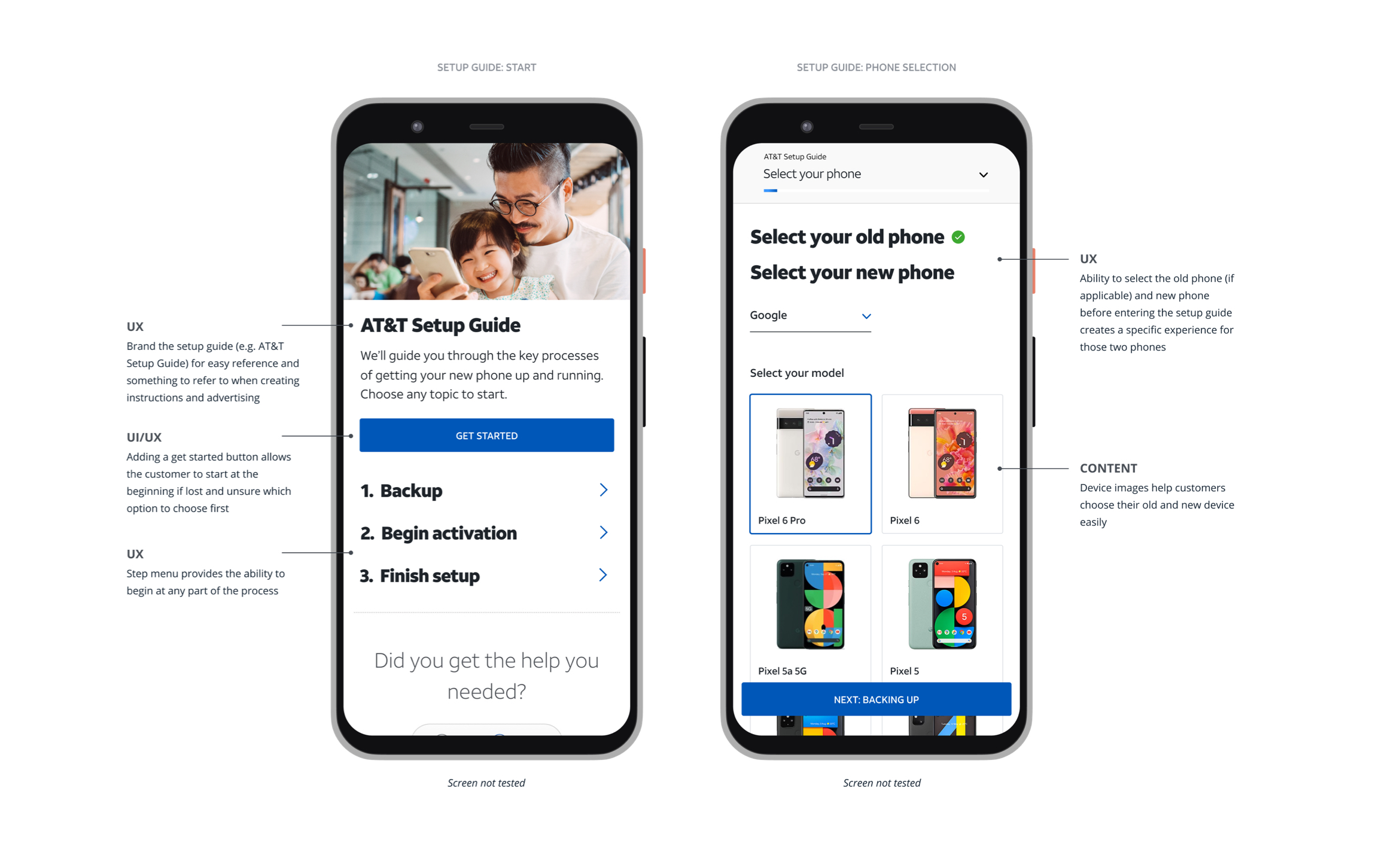
Activation requirements should consider security and ease of use
Most carriers are verifying eSIM activation by asking for some form of personal identifiable information during the on device activation (ODA). We tested customer sentiment around what type of personal information they would prefer and would found the results were mixed. This verification needs further research because of the varying types of user roles and permissions a wireless account can have.
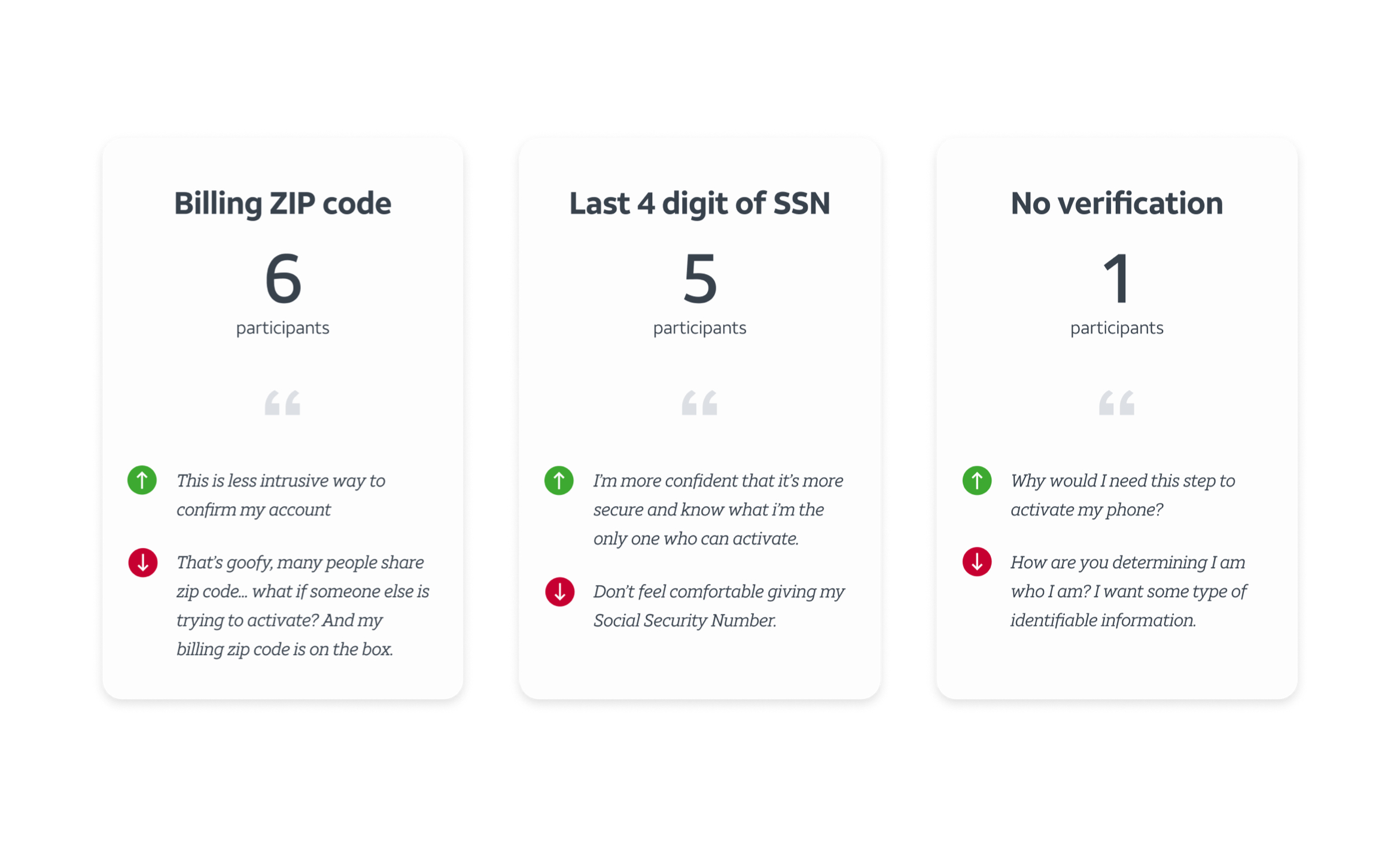
Provide clear information and let customers choose their services
When presenting users with optional services (Android only), it's important to avoid any dark patterns and be clear about exactly what users are signing up for to empower customers to make their own choices. Customer appreciated options toggled off as the default setting. People found this as an "honest" approach that minimizes the possibility of accidentally signing up for an unwanted product.
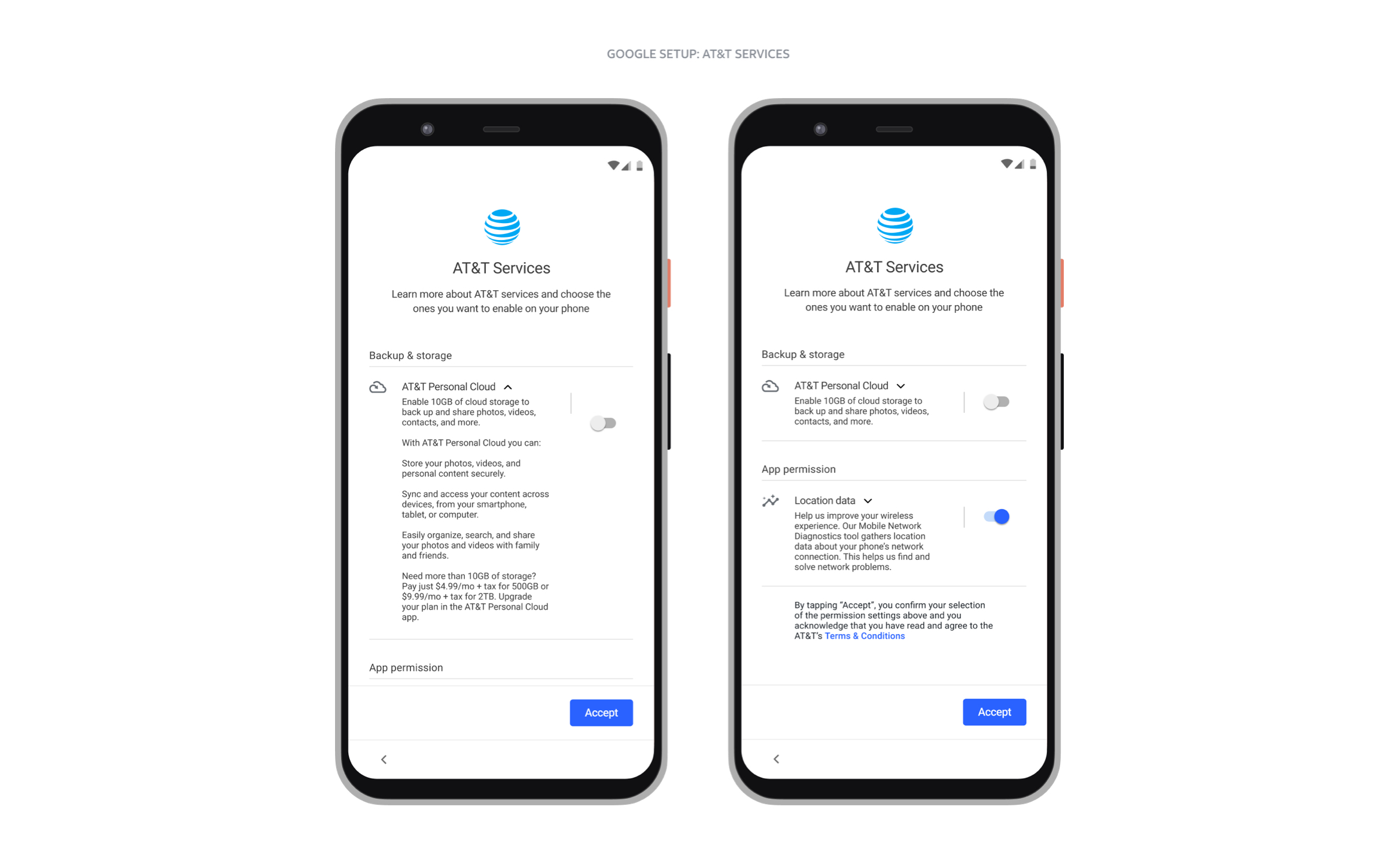
What's next?
eSIM will gradually take up more market share in the next few years and become the standard. This project team will go on to support those efforts through a pilot and nationwide launch in 2022 for multiple manufacturers and mobile operating systems.
My Role
Associate Director, UX
As an associate director of user experience I lead multiple projects. I work directly with stakeholders to understand the problem space and work hands on with the design team to make the experience goals a reality. I often help shape the narrative of the work and present to cross functional groups, incorporating feedback as needed. While I work with a talented team of designers I roll up my sleeves and create designs as well when appropriate.
The activations work outlined here was part of a larger "evolution of activation" effort within AT&T.